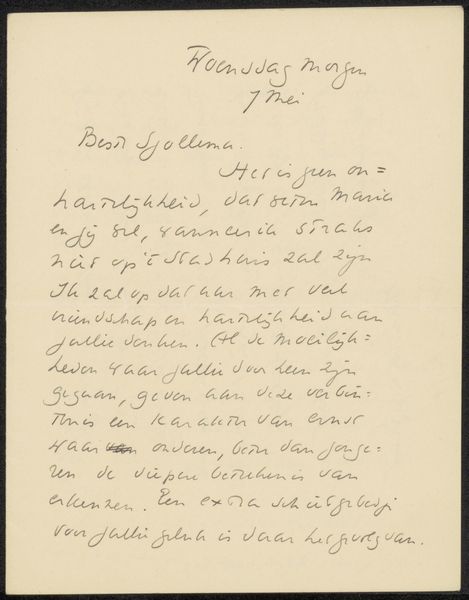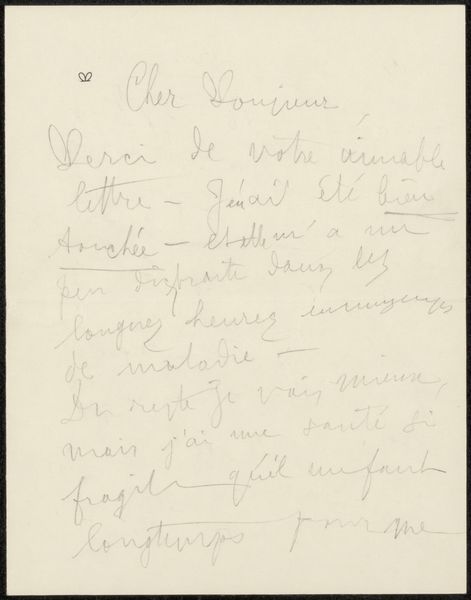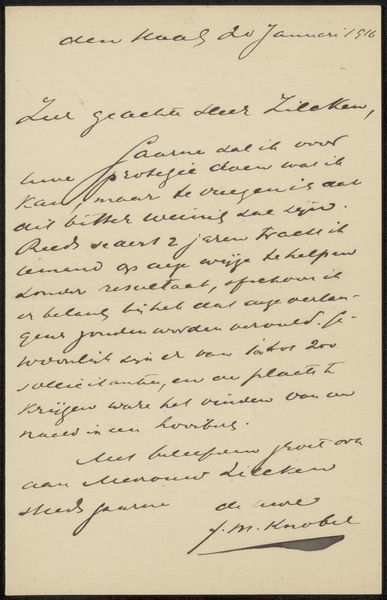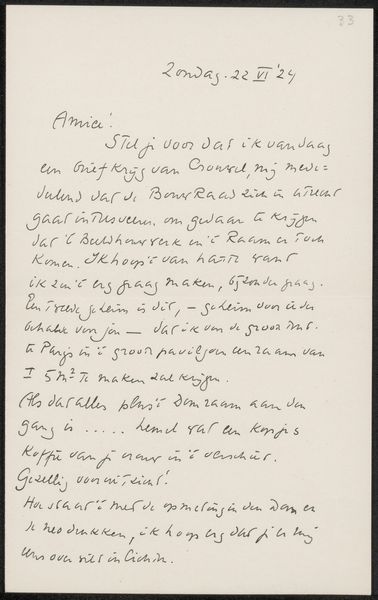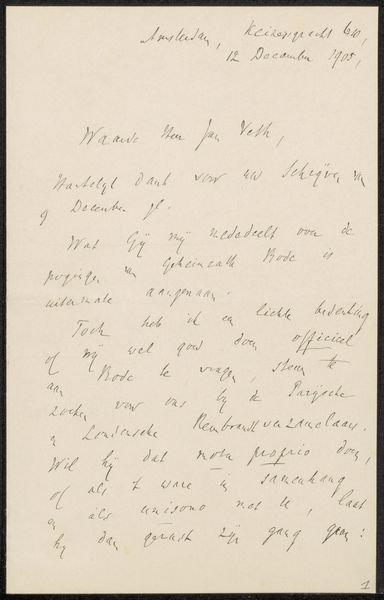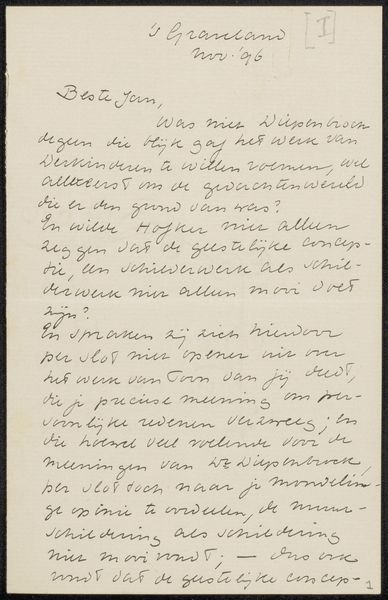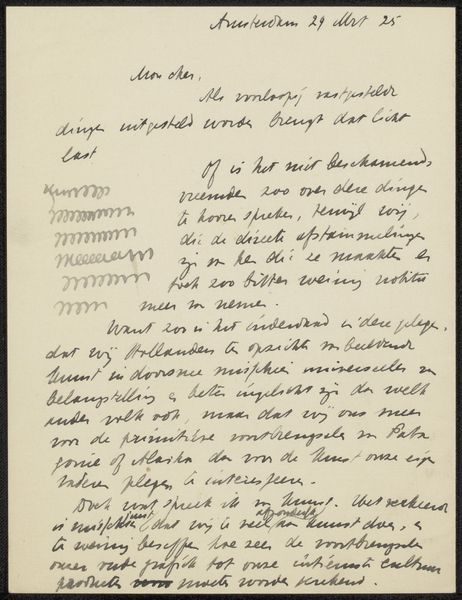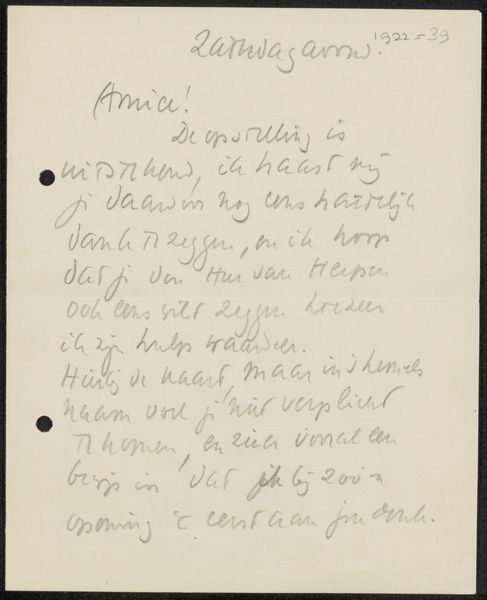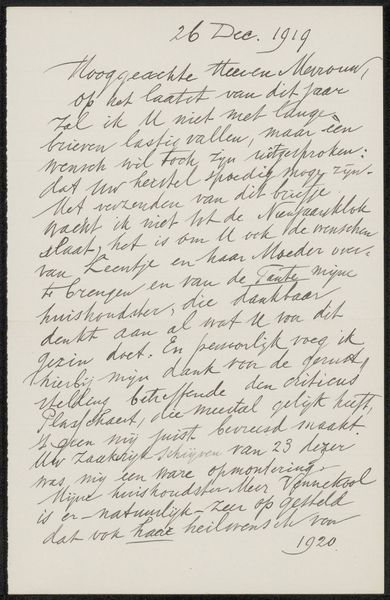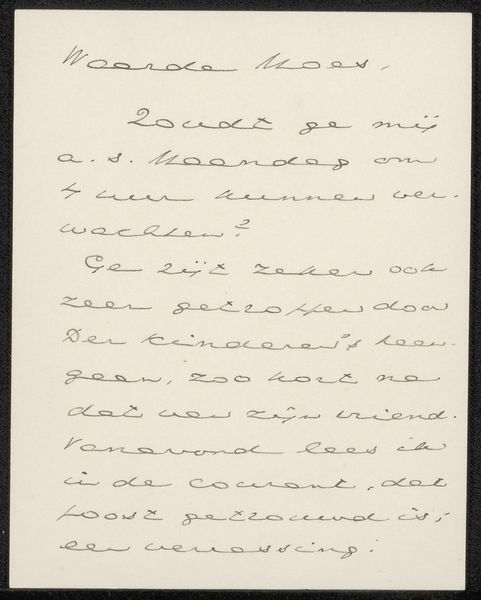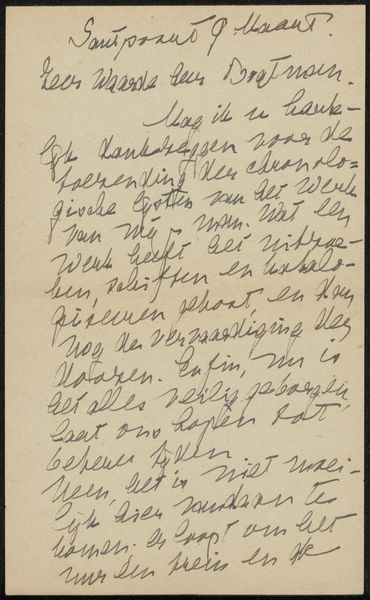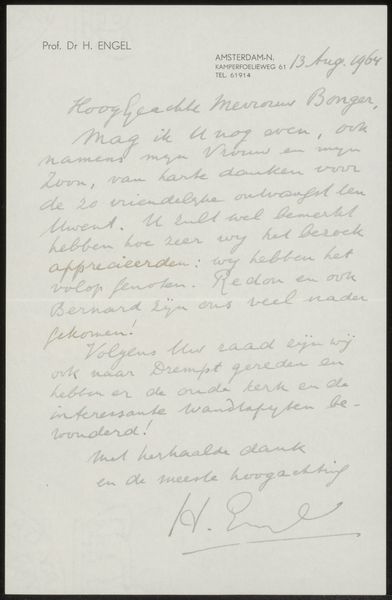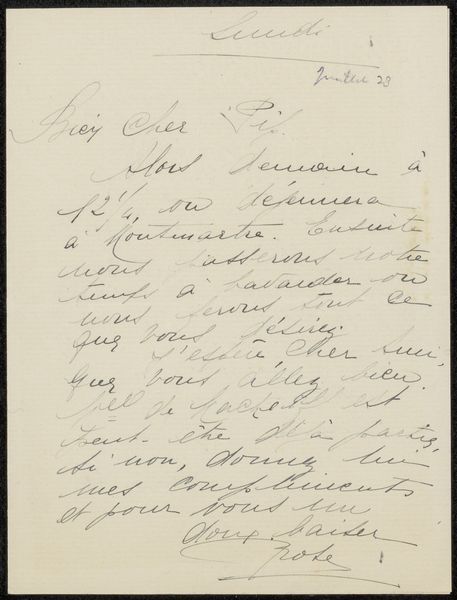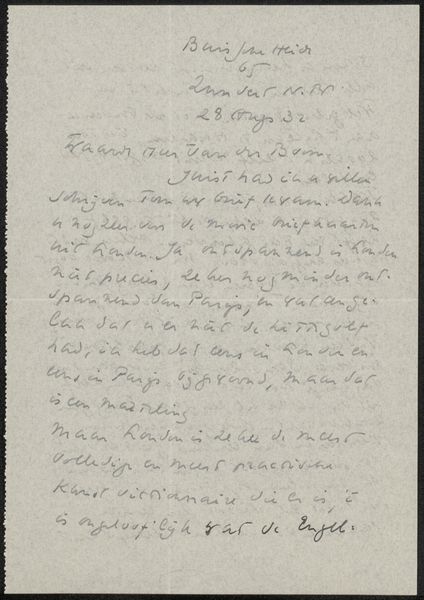
drawing, paper, ink
#
drawing
#
paper
#
ink
Copyright: Rijks Museum: Open Domain
Curator: We’re looking at “Brief aan Willem Bogtman” here at the Rijksmuseum, possibly from 1937-1938, an ink drawing on paper by Richard Nicolaüs Roland Holst. Editor: It's interesting to see something so personal preserved in a museum setting. It strikes me as rather chaotic. The penmanship is energetic, but the overall impression is quite informal. Almost hasty. Curator: Indeed. Letters such as these often illuminate facets of their era that other art forms might miss. The very act of handwriting imbues it with immediacy; in this case, we might explore the lost tradition of letter-writing in a world predominated by digital communication. The date at the top immediately orients us: Dinsdag 19 Augs '37. Editor: The visual weight of the dark ink against the stark white of the paper creates a high-contrast effect, highlighting the curves and loops of the writing itself. But despite the formal aspects of this "drawing", its core appeal is definitely not visual, but symbolic; that writing once contained vital meaning is its raison d'etre. Curator: Precisely, Willem Bogtman was an acquaintance to Holst. While the message’s specific contents remain rather cryptic due to some archaic vocabulary, certain patterns surface. We can see the writer extending familiar regards to this individual while also acknowledging themes of perseverance during periods that otherwise demanded a level of decorum within artistic circles. There appears the expression of solidarity and optimism between Holst and Willem; it creates an intimate connection for anyone willing enough. Editor: There's a vulnerability present within the unedited format of the letter. No digital font here—everything on show! It makes you reflect upon intimacy. In our world so saturated by images and information, these historical "messages in bottles” allow some pause. I admire that Roland Holst was willing enough himself – or had a friendship with someone – to simply share thoughts during those difficult circumstances during which social discourse began narrowing throughout the 1930s across parts of Europe. Curator: Absolutely. It’s also a fascinating case study into exploring artistic interactions from that specific timeframe while revealing details—a glimpse into intimate exchange. Editor: Exactly, what might seem disorganized provides insight not possible with "grand canvases".
Comments
No comments
Be the first to comment and join the conversation on the ultimate creative platform.
